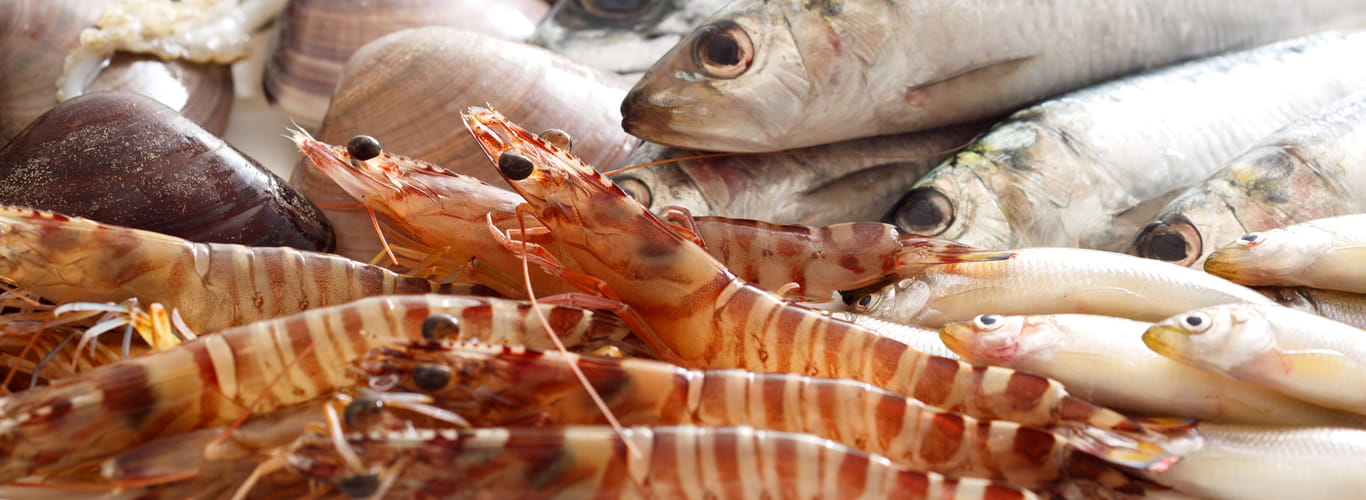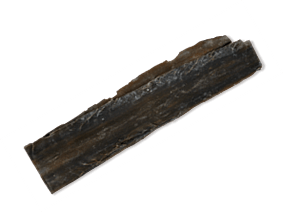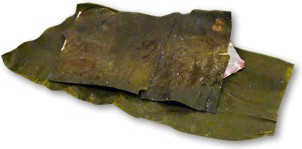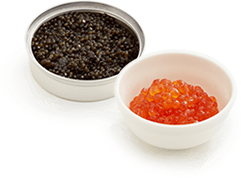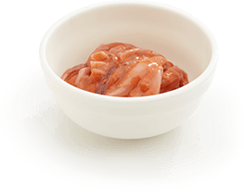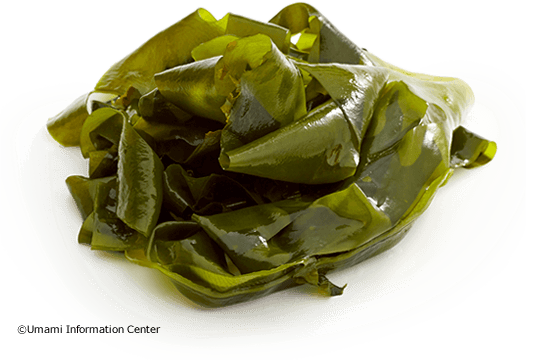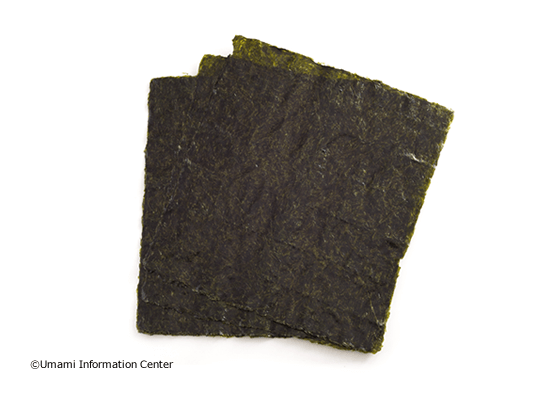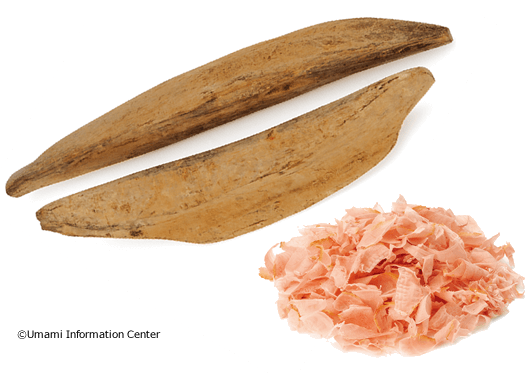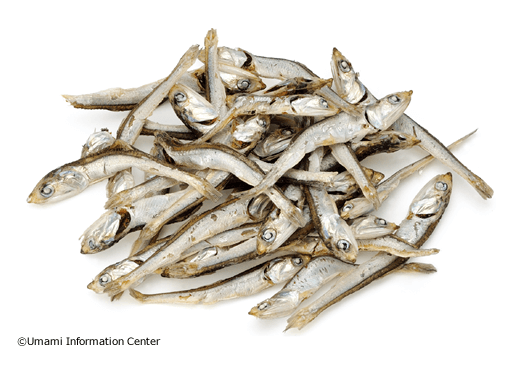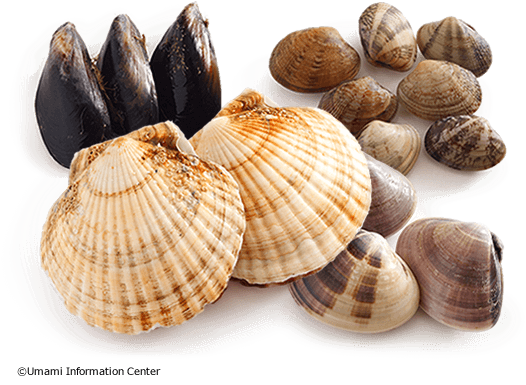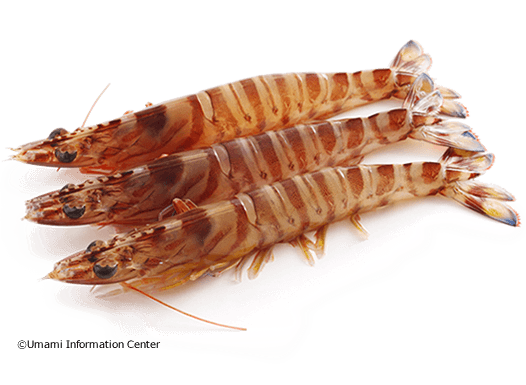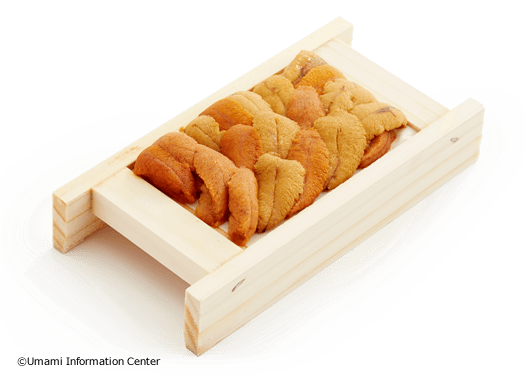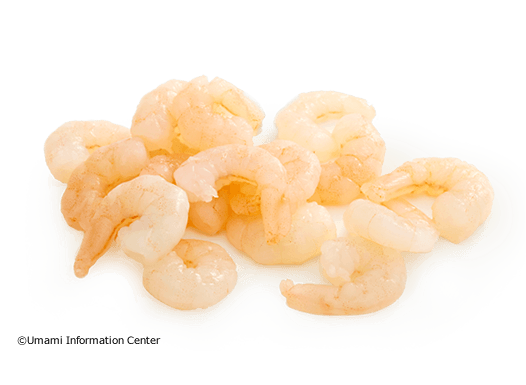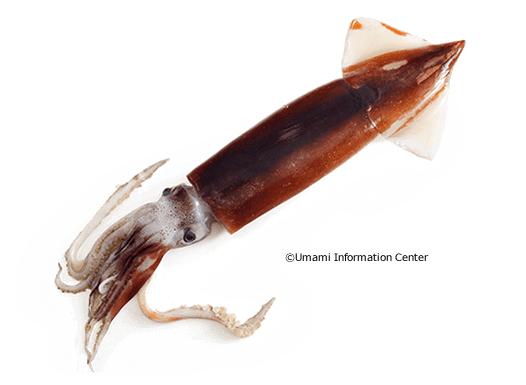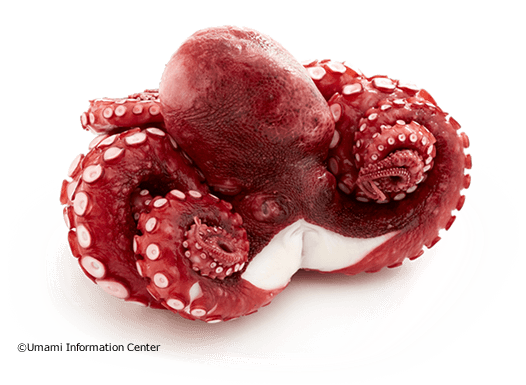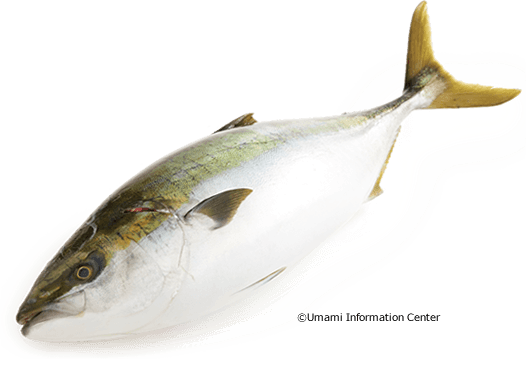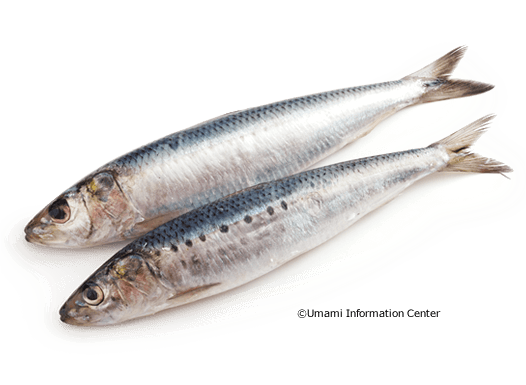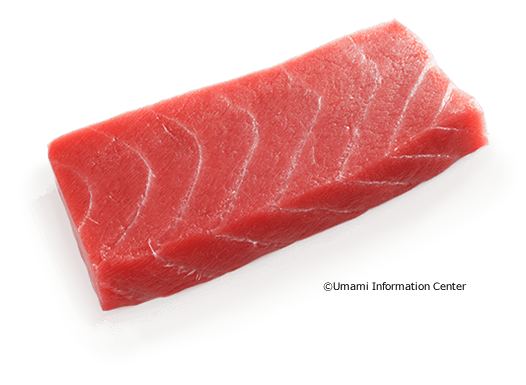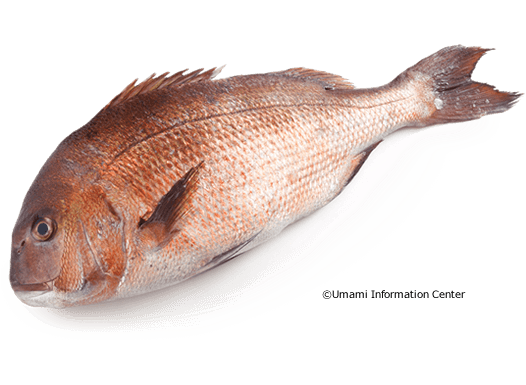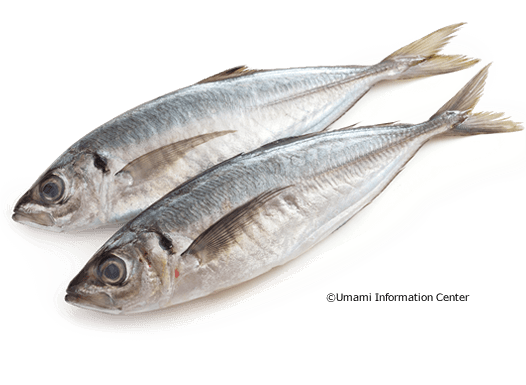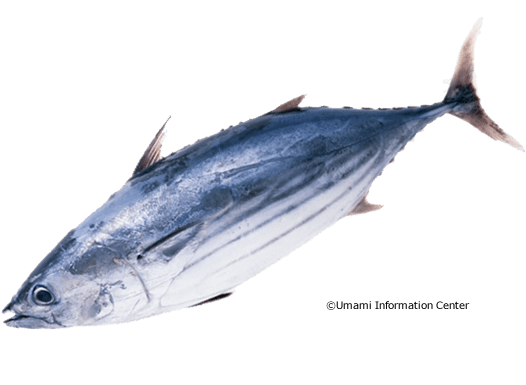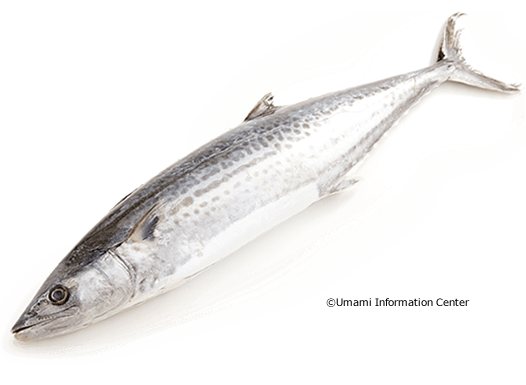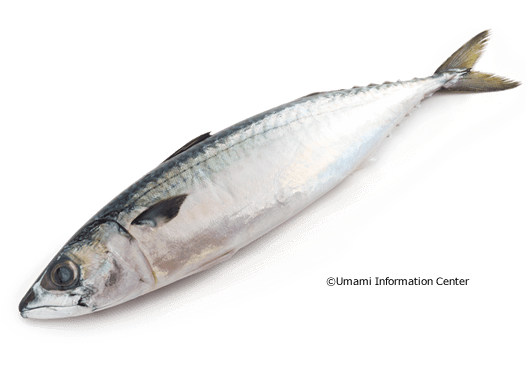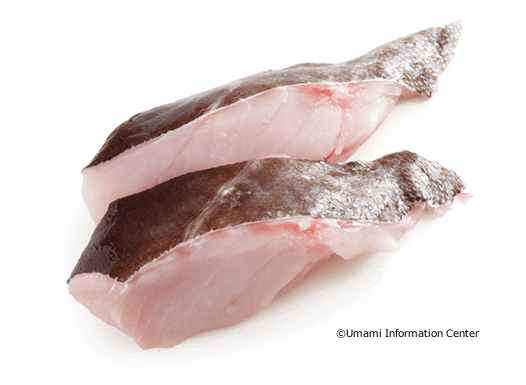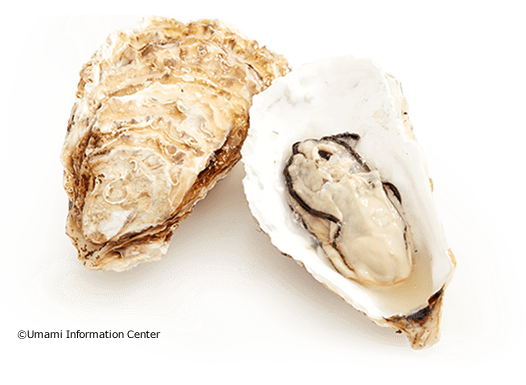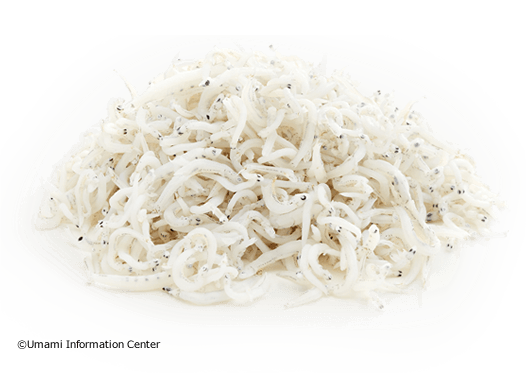Abundant in unsaturated fatty acids such as DHA and EPA, this fish has long been treasured around the world as an important source of nutrients. Particularly famed are the olive oil marinated and salted
anchovies found in Italian and Spanish cuisine. For a long time, they have been combined in Italy in Spain with tomatoes, which are also rich in inosinate, in dishes such as pizza, pasta and paella,
while in Japan they have featured in tsumirejiru,soup with fish dumplings) and been simmered with ume, Japanese apricot. These are all quintessential umami rich dishes from East and West. Recently,
however, stocks have been decreasing to such an extent globally that it said that the humble sardine may go from being a fish of the masses to being a delicacy.
- Levels of naturally occurring glutamate(mg/100g):10~20
- Levels of naturally occurring inosinate(mg/100g):280

